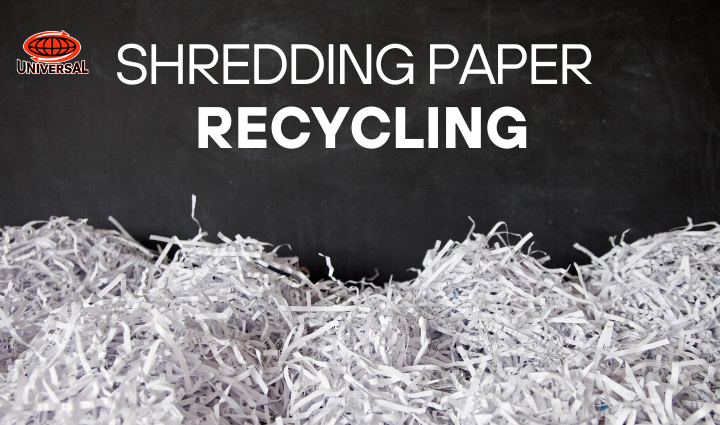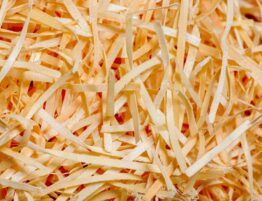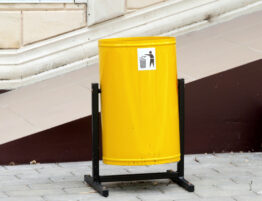
Recycling paper is one of the simplest and most effective ways to reduce our environmental impact, yet when it comes to shredded paper, the process becomes more complex. Shredded paper, a byproduct of document disposal, is often misunderstood when it comes to recycling, and understanding how to dispose of it responsibly is key to maintaining a sustainable and eco-friendly lifestyle. This article will explore the best practices for shredding paper recycling, its challenges, and why it’s essential to get it right.
Why Recycling Shredded Paper Is Crucial
Recycling paper helps conserve natural resources, reduce energy consumption, and decrease the number of trees being cut down. However, when paper is shredded, it can become difficult for recycling plants to process effectively. The tiny strips of shredded paper can clog machinery or mix with other materials, making it harder for recycling facilities to separate and process paper properly. Despite these challenges, shredding paper recycling is still essential as it reduces waste and promotes sustainability.
Shredded paper is often disposed of in landfills, but it can be recycled if handled correctly. By recycling shredded paper, you contribute to the circular economy, where materials are reused rather than discarded. Recycled shredded paper can be used to create new paper products, such as tissue paper, cardboard, and insulation, which reduces the need for raw materials and lowers carbon emissions associated with manufacturing.
The Challenges of Shredded Paper Recycling
The primary challenge in shredding paper recycling lies in the fact that the paper fibers are shorter after shredding. These short fibers are weaker than longer ones, making them less useful for creating new paper products. Furthermore, shredded paper is often compact and difficult to sort, which complicates the recycling process.
Another issue with shredded paper is contamination. Shredded paper often includes staples, paper clips, or other materials that are not recyclable, making it necessary for people to separate these items before recycling. Even if shredded paper is placed in a recycling bin, improper handling can result in it being rejected or mixed with non-recyclable materials.
How to Recycle Shredded Paper Properly
To ensure your shredded paper is recycled responsibly, it is crucial to follow the guidelines set by local recycling centers. Many municipalities do not accept shredded paper through curbside pickup, as it poses a risk to recycling operations. However, there are still several options for shredding paper recycling.
- Check Local Recycling Programs: Some recycling programs accept shredded paper, but they may require it to be placed in a specific container, such as a paper bag or box, to prevent it from scattering. Make sure to follow the instructions carefully to avoid contamination.
- Find a Specialized Facility: If curbside recycling is not an option, look for a local recycling drop-off center that accepts shredded paper. Many communities have designated bins or collection points where shredded paper can be disposed of properly.
- Secure Shredding Services: Many companies offer secure shredding services as part of their document destruction process for businesses and individuals. These services ensure that sensitive documents are shredded and immediately sent for recycling, preventing any potential data breaches and reducing waste.
- Composting Shredded Paper: Another environmentally-friendly option for shredding paper recycling is composting. Shredded paper can be added to compost piles as a carbon source, balancing nitrogen-rich materials like food scraps. However, avoid using colored or glossy paper, as it may contain chemicals that could harm the compost.
Innovative Uses for Shredded Paper
While shredding paper recycling is important, there are also alternative ways to reuse shredded paper if local recycling services are unavailable. Some creative uses include:
- Packing Material: Shredded paper can be used as an eco-friendly alternative to plastic bubble wrap or packing peanuts when shipping fragile items.
- Pet Bedding: Shredded paper makes an excellent bedding material for small pets, such as hamsters, rabbits, or guinea pigs.
- Craft Projects: Shredded paper can be used in arts and crafts, such as paper mache, or as a filler for greeting cards and gift boxes.
- Garden Mulch: Shredded paper can also be used as mulch in gardens, helping to retain moisture and suppress weeds.
These alternative uses for shredded paper contribute to waste reduction and can be a fun and functional way to give new life to otherwise discarded material.
The Environmental Impact of Not Recycling Shredded Paper
Failing to recycle shredded paper properly can have significant environmental consequences. When shredded paper ends up in landfills, it contributes to the growing issue of waste management. As shredded paper decomposes, it generates methane, a potent greenhouse gas that contributes to climate change.
By ensuring that shredding paper recycling is part of your waste disposal routine, you are helping to prevent this form of paper from accumulating in landfills and reducing the overall carbon footprint associated with paper production and waste.
Benefits of Shredding Paper Recycling for Businesses
Businesses, especially those that handle sensitive information, often generate large volumes of shredded paper. In addition to contributing to sustainability efforts, businesses can benefit from shredding paper recycling by protecting confidential data. Secure shredding services ensure that sensitive documents are destroyed and recycled appropriately, reducing the risk of data breaches and protecting the organization’s reputation.
Many companies also promote their commitment to sustainability by integrating paper recycling into their operations. By recycling shredded paper, businesses can demonstrate their commitment to reducing waste and conserving resources, which can improve brand image and attract eco-conscious customers.
How to Encourage Shredding Paper Recycling in Your Community
As individuals, we can encourage our communities to adopt better practices for shredding paper recycling by:
- Educating Others: Raise awareness about the importance of recycling shredded paper and how to do it correctly. Share information about local recycling programs and drop-off points to make it easier for others to participate.
- Organizing Shredding Events: Host community shredding events where people can bring their sensitive documents to be securely shredded and recycled. This helps to reduce the amount of shredded paper ending up in landfills while also promoting data security.
- Supporting Businesses with Sustainable Practices: Support companies that offer secure shredding and shredding paper recycling services. This can encourage other businesses to follow suit and implement environmentally friendly practices.
Final Thoughts
Recycling shredded paper may seem complicated, but with the right knowledge and practices, it can be an effective way to contribute to a more sustainable future. Whether you’re at home or work, taking the time to properly dispose of shredded paper ensures that this material is recycled and reused rather than contributing to environmental waste. By following the steps outlined in this guide, you can make a positive impact and play a crucial role in the shredding paper recycling process. Let’s all do our part to protect the planet and promote a greener, more sustainable future.








